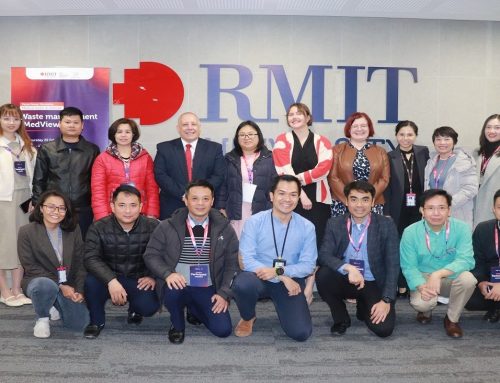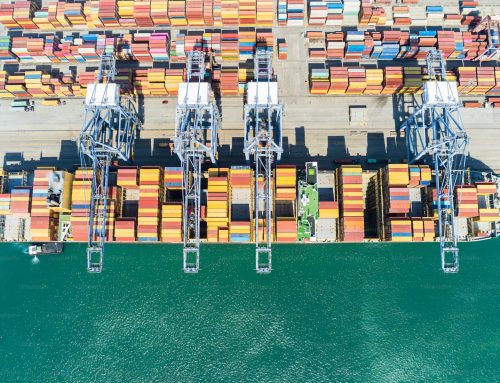Tunca defended his doctoral thesis in Supply Chain Management and Social Responsibility: Scalability and resilience in humanitarian supply chains on December 16, 2017.
As humanitarian crises increasingly become part of our daily lives, humanitarian logistics and humanitarian supply chain management are becoming more important than they have ever been. As both natural and man-made disasters are increasing, affecting the economy and the lives of more and more people, resilience and scalability has become innovation in humanitarian supply chain management in dealing with demand surges.
The humanitarian sector, and thus humanitarian supply chains, is the key to providing the best possible services to the people affected by humanitarian crises. Humanitarian supply chains are defined by the various challenges in relation to the unpredictability of disasters and the unpredictability of demands. Humanitarian supply chains are growing, as many of the disasters have a global impact rather than a local impact. I would like to focus on why scalability and resilience are important for humanitarian organisations, humanitarian supply chains, and humanitarian networks. Recent humanitarian crises in Syria and Bangladesh and recent disasters, such as the earthquakes in Kashmir and Nepal and Hurricanes Maria and Irma, show the importance of scalability in humanitarian operations.
During my trip to Kenya, I observed that humanitarian organisations are running operations in survival mode as they are dependent on funding from donor organisations. As their programme come to an end, they exit. However, this is not an exit, as we observe in a business setting, as there is a need to provide small-scale aid and basic nutrition services. As we talk about supply chain integration here, future work should take beneficiaries into account; much as commercial supply chains integrate consumers into their chain, humanitarian organisations need to communicate properly to beneficiaries and hear their voices in order to create sustainable communities.
Humanitarian supply chains are scalable, thus they are able to quickly mobilise resources and monitor the communities continuously in order to anticipate what is coming, though this occurs mostly where developmental aid is taking place. Moreover, local actors are important for communicating to the local communities, as they are well aware of the needs of the affected population. The local actors can also enable humanitarian organisations to quickly scale up their capacities while continuing to provide humanitarian services to the beneficiaries. For instance, the International Federation of Red Cross and Red Crescent Societies (IFRC) has been building scalability into their supply chains in order to be more sustainable and to allow them to scale up quickly by cooperating with local bodies.
As researchers, we have to raise questions and contribute to the interplay between theory and practice to inspire the development of practical approaches, creating innovation and value by borrowing concepts from other fields. Therefore, it is important to highlight some best business practices and how they can similarly benefit humanitarian organisations. Structural flexibility is introduced as a supply chain design principle that allows supply chains to deal with surges in demand in an era of turbulence. It also moves supply chains toward a more customer-centric approach, as it enables supply chains to anticipate the surge demand from the base demand. Similarly, humanitarian organisations are building structural flexibility among their partners in order to increase the scalability of humanitarian operations. Generally speaking, humanitarian organisations are implementing structural flexibility by building relationships, such as by sharing their warehouses or human resources. Moreover, they outsource the management of their warehouses and the distribution of commodities, and—most importantly—they procure both globally and locally in order to maintain both the quality level and local markets. Anticipation is another aspect of structural flexibility that contributes to humanitarian supply chain management. This is done through monitoring and evaluation and through the capabilities of organisations to quantify information. For example, in Kenya, the National Drought Management Authority quantifies weather-related data to foresee droughts, while hospital admission data can also be quantified, which can show whether there will be a nutrition-related emergency.
In a business setting, supply chain integration increases performance outcomes through reward and risk sharing and better services. In 2005, during the Kashmir earthquake operations, the United Nations introduced a new system to the humanitarian world: the cluster system. It enables humanitarian organisations to immediately coordinate and plan response operations following a major disaster. This system aims to improve coordination among the vast number of international humanitarian aid organisations as well as enable a humanitarian supply network to scale up quickly to respond to the disaster-affected region. Over time, the cluster system has improved coordination amongst organisations and made it easier to scale up interventions, as shown during recent natural disasters, such as Typhoon Haiyan in 2013 and the Nepal earthquake in 2015. When responding to major disasters, aid agencies are willing to collaborate more in order to scale up the immediate response, as can be observed from the cluster system.
The IFRC and many aid agencies are also encouraging humanitarian organisations to collaborate with other organisations, most importantly with local organisations, in order to be able to scale up humanitarian operations quickly. In recent years, the inability to integrate efforts has led to unsuccessful operations. The undeniable fact is that humanitarian organisations need local knowledge when responding to a region affected by a disaster, especially in terms of needs assessment. As the World Disasters Report suggested, both informal and formal relationships amongst humanitarian organisations are critical to the success of scaling up operations, as observed during the wildfires in Canada, where almost 90,000 people were evacuated safely thanks to the well-coordinated efforts.
Hence, in a nutshell, humanitarian supply chains with structural flexibility can yield scalability to increasing their capacities. Moreover, working together closely in a humanitarian supply chain increases the chance of success as well as the chance for scaling up. However, the ultimate goal is to build resilient communities by building resilient supply chains that eventually contribute to sustainability. Resilience in humanitarian supply chains is crucial in order to provide service continuity during a crisis and following a disaster. As the integration of humanitarian organisations is key to both supply chain scalability and supply chain resilience, it is also important to integrate the beneficiaries into the humanitarian supply chains, as humanitarian organisations have generally used a push strategy when considering the demands of beneficiaries. In doing so, the quantification of data will be more accurate, and communities would better understand the objectives of aid. As a result, humanitarian organisations can scale up their capacity quicker, with greater accuracy, and within the limits of the given funding, thus satisfying the expectations of both the donors and the beneficiaries.
Similar to customer segmentation strategies in business settings, humanitarian organisations—and specifically humanitarian organisations that are working for development aid programmes—should start beneficiary segmentation in order to increase the accuracy of the scaling-up and scaling-down processes and to increase the resilience of humanitarian supply chains. This is the aspect that should connect humanitarian supply chain management to the marketing and service management discipline.
As a future research endeavour, there are questions about how marketing and services management can contribute to humanitarian supply chain management. In order to increase the welfare of beneficiaries and to avoid seeing them only as targets for mobilised relief commodities, a profound look at the discipline of marketing will be beneficial. In so doing, not only can we increase the service quality in humanitarian supply chains, but we can also delve deeper into determining the root causes for building development programmes. Additionally, humanitarian supply chains will become more customer-centric supply chains, where the beneficiaries will be considered equal to the donors. This will also increase the segmentation of beneficiaries and determine what their needs really are. Eventually, this will lead to greater scalability and more resilient humanitarian supply chains and more resilient communities.




